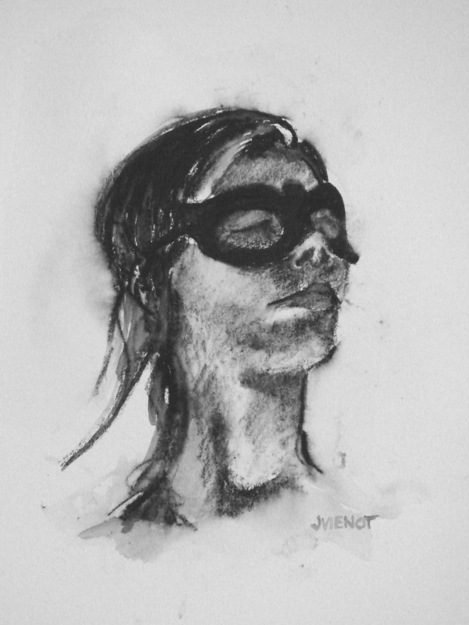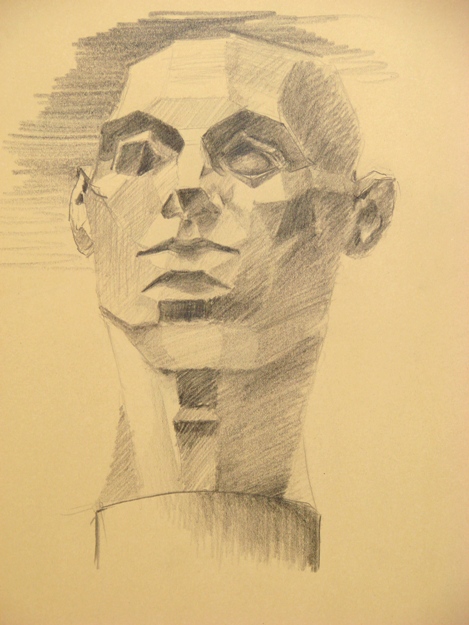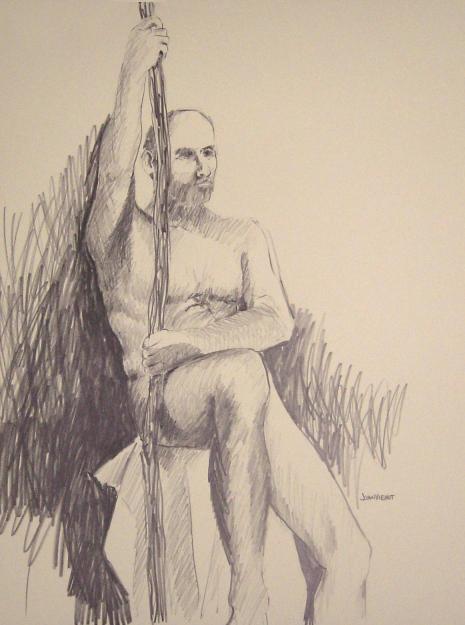
First, some blatant self-promotion — if you will “Like” my facebook page and share one of my posts, it will greatly improve my fan base. Right now my exposure is a little puny. It may be because I am practicing figure drawing, which is the subject of this blog post.
Some people are not comfortable with the nude figure. It is more accepted in some cultures, certainly more so in Europe than in the United States. In many areas of the world, it is not at all unusual to see bare-breasted or nude people at public locations like the beach. But in the United States, many people are taught that the body is to be hidden, some even associating it with shame, others merely with privacy. Many years ago, I remember when one of my drawings was accepted for a juried show when I attended the University of Northern Colorado. My drawing instructor told me that my wildly expressionistic and colorful drawing was not selected for technical merit, but rather for the sheer expressive quality. The subject was a dancer, drawn in bold strokes of bright reds and greens, with charcoal contours defining the figure. I had actually attended some modern dance classes where I was allowed to sketch the dancers, and that drawing was from one of those sessions. The figure was neither clothed nor unclothed in the drawing — it was simply gestural, to reflect the dynamic movement of the fast-moving dancer. But I remember when I brought it home, and proudly showed it to my family, one family member told me that I should be ashamed, that it was nasty. It was not the first time that my art had not been received exactly how I expected, but I had already by that time grown a shell, so while the comment is one I will forever remember, it did not stop me from pursuing my favorite subject, the human figure.
 Other areas of the world readily display nude sculpture and paintings. But here in the U.S., we are a little more prudish, distinguishing “non-offensive” art as “family-friendly”. Public institutions displaying art might refuse to display nude pieces because they want to be family-friendly, because children seeing nude artwork most certainly will be corrupted. More likely, they need to keep their more conservative benefactors happy, so they are reluctant to take risks.
Other areas of the world readily display nude sculpture and paintings. But here in the U.S., we are a little more prudish, distinguishing “non-offensive” art as “family-friendly”. Public institutions displaying art might refuse to display nude pieces because they want to be family-friendly, because children seeing nude artwork most certainly will be corrupted. More likely, they need to keep their more conservative benefactors happy, so they are reluctant to take risks.
 In our weekly figure drawing session a couple of months ago, a woman from England brought her talented 13-year-old son to participate. Clearly he was practiced — this was not his first time drawing a nude model. Shock of shocks, instead of having some puerile, voyeuristic interest, he behaved just like all the other artists, immediately and matter-of-factly diving into his drawing.
In our weekly figure drawing session a couple of months ago, a woman from England brought her talented 13-year-old son to participate. Clearly he was practiced — this was not his first time drawing a nude model. Shock of shocks, instead of having some puerile, voyeuristic interest, he behaved just like all the other artists, immediately and matter-of-factly diving into his drawing.
The stigma is so pervasive where I live, in rural Northwest Florida, that it was a long time before there was any nude figure drawing available on a consistent basis. In the not-so-distant past in fact, the sheriff was called to shut down previous efforts at one gallery. Even now in my area, even with the sophistication of the people now living in the beach area which has been developed over the past 30 years, out of the 40-some good-sized galleries between Destin and Panama City Beach, Studio b. in Alys Beach stands alone in offering regularly weekly figure drawing sessions with a live nude model.
Working from a human figure is unlike any other subject. A tree for example, will be very forgiving if you draw a branch coming out of the trunk at a different angle. The figure on the other hand will look grotesque if you draw an arm coming out of the trunk at the wrong angle. There are certain articulations that joints can do, and the viewer’s eye will notice if it is incorrect even if they can’t consciously put their finger on it. If an artist wants to put people in his art, it is essential that he practice figure drawing, if he wants them to be convincing. There are a number of artists in the area who use figures in their work, who might benefit from more practice. Just saying…
Not everyone is comfortable with nude figures — I recognize that. At least now, if someone is uncomfortable with my work, at least to my face they just give a tepid response if any, and not outright condemnation. To a great extent, I think that people who have been exposed to the nude as an art form, view it as a thing of beauty, and the more they are exposed to it, the sooner they can let go of the nasty or shameful interpretations they may have been taught to associate with nudity. When we see all things as having beauty or at least a correctness in all stages of their existence, then perhaps we will care for our planet and its life forms with more reverence. My figure drawings are very simply my personal expression of the beauty and complexity of the human form and my efforts toward mastery of that expression.
Most of my images are available for purchase. Contact me if you are interested. — Joan Vienot


























